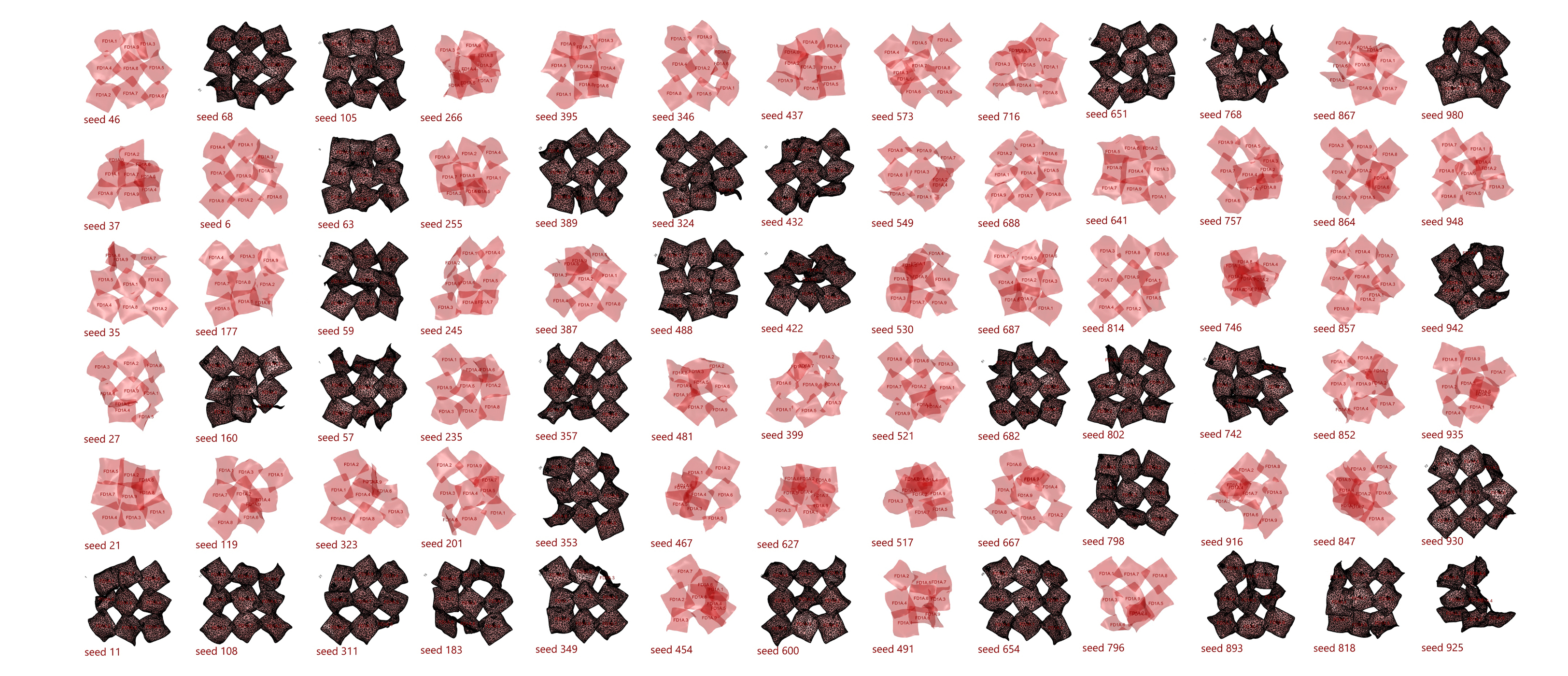
(Un)fitting Aggregations
Material-dependent Production and Spielraum of Distinct Vulcanized Fiber Pieces
Allner,
Lukas, Karolin Schmidbaur, and Gonzalo Vaíllo. In ACADIA 2024: Design Change, 1:81–92. Calgary: Association
for Computer Aided Design in Architecture, 2024.
Full article︎︎︎
This study explores the integration of
unpredictable material behavior within architectural design and production,
specifically examining the properties and potential of vulcanized fiber (VF) in
the multiple realizations of the simple design of a 3 x 3 checkered pattern. It
challenges traditional production methodologies—standardized mass production,
digital mass customization, and discrete combinatorial approach—by introducing
the notion of material-dependent production. This approach is exemplified by
the distinctive morphological and mechanical transformations that VF undergoes
during the drying production process, leading to each piece uniquely shaping
itself. The divergence between the initial design of the pattern and the
singular resulting pieces leads to an array of different and unexpected
aggregation possibilities to construct the pattern. The highly local and
situated pattern-part relation and its variability for diverse outcomes are
conceptualized following Lars Spuybroek’s notion of Spielraum or “room to
play.” This concept, understood as both physical space and space of
possibilities, is defined by the material agency embedded in the pieces and the
organizational guidance of the pattern. Methodologically, computational analysis
is employed to calculate the number of feasible pattern realizations attending
to the assembly tolerances of the morphological diversity of the VF pieces. In
this sense, the study bridges computational techniques and material specificity
to understand the threshold (or Spielraum) between the designed pattern and
material-informed parts. The findings of this study advocate for a reevaluation
of material agency in architectural processes, demonstrating that an embrace of
material contingency and indeterminacy enriches architectural production and
creativity.
